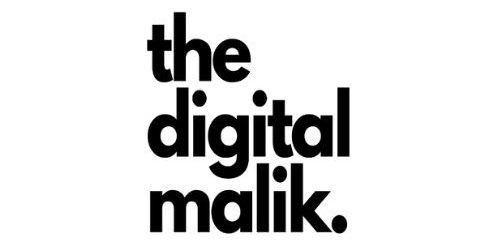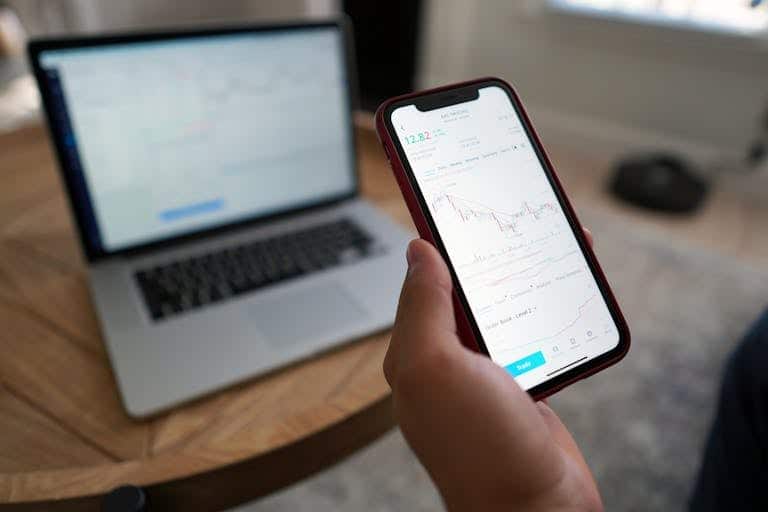Digital Marketing vs Affiliate Marketing: Crack the Code 2025
Hey there, Digital Entrepreneur! 🚀
Did you know that by 2026, the global digital marketing industry is projected to reach a whopping $786.2 billion? And get this, Affiliate Marketing alone is expected to expand to $36.9 billion by 2030! 🤯
That’s a goldmine out there, right?
Now, whether you’re a business owner trying to conquer the online world, a marketer looking to sharpen your skills, or just someone super curious about this digital landscape, understanding the difference between Affiliate Marketing vs Digital Marketing is absolutely crucial.
Think of it like this: Digital Marketing is like the vast ocean, while Affiliate Marketing is a specific, powerful current within that ocean.
Let’s dive deep into this guide together, and I’ll help you navigate this exciting world and make some seriously informed decisions for your business strategy! 🌊
I’m here to help you unlock the secrets of both and figure out which path (or maybe even both!) is the best fit for your goals.
Ready to get started? Let’s go! 💪

TL;DR:
- Digital marketing is the umbrella term encompassing all online marketing strategies.
- Affiliate marketing is a performance-based subset of digital marketing.
- Digital marketing requires broader expertise, while affiliate marketing focuses on commission-based sales.
- Both strategies can be combined for maximum business growth.
Digital Marketing vs Affiliate Marketing: Unveiling the Key Differences & Opportunities
The Key Differences Between The Two (comparison chart)
These two forces are shaping the online world, but understanding their unique strengths is key to unlocking your Digital Marketing Success.
|
Comparison
|
AffilIATe Marketing
|
Digital Marketing
|
|---|---|---|
|
Definition |
Affiliate marketing is a performance-based marketing strategy where a business rewards one or more affiliates for each visitor or customer brought by the affiliate’s own marketing efforts. |
Digital marketing, on the other hand, is a broad term that refers to the marketing of products or services using digital technologies, mainly on the internet, but also including mobile phones, display advertising, and any other digital medium. |
|
Focus |
Affiliate marketing focuses on promoting specific products or services of other companies and earning a commission for each sale made through the affiliate’s marketing efforts. |
Digital marketing, on the other hand, encompasses a wide range of tactics and strategies, including search engine optimization (SEO), email marketing, social media marketing, content marketing, pay-per-click (PPC) advertising, and more. The focus is on building a brand, generating leads, and driving sales through various digital channels. |
|
Control |
In affiliate marketing, affiliates have significant control over their marketing strategies and tactics, as long as they comply with the program’s terms and conditions They can choose which products to promote, how to promote them, and where to place their affiliate links. |
In digital marketing, businesses have more control over their marketing messages and branding. They can create and manage their own website, social media profiles, email campaigns, and other digital assets to promote their products or services. |
|
Cost |
Affiliate marketing is typically a performance-based model, meaning that affiliates only earn a commission when they generate a sale or a lead. This makes it a low-risk and cost-effective marketing strategy for businesses. |
In digital marketing, businesses have more control over their marketing messages and branding. They can create and manage their own website, social media profiles, email campaigns, and other digital assets to promote their products or services. |
|
Measurability |
Affiliate marketing is often easier to measure, as affiliates can track their clicks, sales, and commissions through affiliate links and tracking codes. |
Both affiliate marketing and digital marketing are highly measurable, allowing businesses to track their marketing performance and optimize their strategies accordingly. |
The Fundamentals: Digital Marketing and Affiliate Marketing
What Exactly Falls Under the Umbrella of Digital Marketing?
Here is a story about how I learned the real difference between – trust me, it’s like comparing an entire orchestra to someone playing just the violin!
Both are amazing, but they serve different purposes.
When I first started in online marketing, I thought I could just jump right into everything at once.
Boy, was that a wake-up call!
Digital Marketing is like being the conductor of that orchestra I mentioned – you’re coordinating ALL the instruments.
We’re talking about everything, the whole lot, from your website SEO and email campaigns to social media posts and paid ads.
It’s like running a multi-ring circus, but online!
Here’s a practical example:
Think of digital marketing like owning a restaurant.
You’re responsible for the menu (your content), the advertising (paid ads), the restaurant’s appearance (website design), the customer service (social media), and even the delivery service (email marketing).
You’ve got your hands in every pie, so to speak!
Now, Affiliate Marketing?
That’s a whole different ballgame.
It’s more like being a super-successful food critic who gets paid when people visit the restaurants you recommend.
You’re focusing on one specific skill: convincing people to try something you believe in, and getting a sweet commission when they do.
I learned this the hard way when I started my first blog. I was trying to do everything under the sun with digital marketing – running Facebook ads, posting on Instagram three times a day, sending out weekly newsletters…
I was spreading myself thinner than butter on hot toast!
Then I discovered that focusing on Affiliate Marketing allowed me to zero in on what I did best: recommending products I actually used and loved.
How Does Affiliate Marketing Differ from Other Digital Marketing Strategies?
Here’s where it gets interesting with the investment side of things.
Digital Marketing can be like building a house from scratch – you need tools (marketing software), materials (content), and skilled workers (maybe a team of specialists).
I remember dropping $500 on my first email marketing platform, another $300 on SEO tools, and don’t even get me started on the Facebook ads budget! 😅
Affiliate Marketing, though? It’s more like renting a room.
Your main investment is time and effort in creating genuine, helpful content about products you’re promoting.
The biggest expense might be your website hosting and maybe some basic tracking tools. The real investment is in building trust with your audience.
Speaking of audience, here’s something crucial I’ve learned:
Digital Marketing lets you cast a wide net – you’re trying to reach anyone who might be interested in your business.
It’s like throwing a massive party and inviting the whole neighborhood.
With Affiliate Marketing, you’re more like a matchmaker, connecting specific people with specific products they’ll love. It’s more targeted, more personal.
One more thing that totally blew my mind: the control factor.
With Digital Marketing, you’re the boss of everything – your brand voice, your messaging, your timing.
But with Affiliate Marketing, you’re more like a trusted advisor. You don’t control the products you’re promoting, their prices, or their availability. I learned this lesson when one of my favorite products suddenly went out of stock during a promotion I was running!
Digital Marketing: The Comprehensive Approach
How Does Affiliate Marketing REALLY Work?
Think of it as being this amazing conductor of a super-talented orchestra where every instrument plays a crucial part in creating beautiful music.
Let me break this down for you in a way that’ll make total sense!
I remember when I first dove into Digital Marketing – talk about feeling overwhelmed! I was like a kid in a candy store, trying to grab everything at once.
But here’s the thing: Digital Marketing is actually like cooking a gourmet meal. You’ve got different ingredients (channels) that need to work together to create something amazing.
Let’s start with the channels.
- SEO (Search Engine Optimization) is like your slow-cooker – it takes time, but boy, does it deliver flavor!
- I spent months optimizing my first website, and it felt like watching paint dry.
- But after about 6 months, BAM! My organic traffic started doubling every month.
- PPC (Pay Per Click), on the other hand, is like your microwave.
- Instant results, but you gotta be careful with the settings, or you’ll burn through your budget faster than a teenager with their first credit card! 😅
- Social Media and Email marketing? They’re like your trusty stovetop burners.
- You’re constantly adjusting the heat (engagement) and stirring the pot (content) to keep things cooking just right.
- I learned this the hard way when I tried to automate everything and ended up sounding like a robot – my engagement dropped faster than a hot potato!
- Brand control. This is where digital marketing really shines, and it’s like being both the director and star of your own show.
- You get to control every aspect of your message, from the tone of voice to the timing of your campaigns.
- There are case studies of brands that maintained such consistent messaging across all channels that their audience could recognize their content without even seeing the logo – that’s powerful stuff! Think Nike: “Just Do It” and Redbull “Gives You Wings”.
- The Data ownership piece? Oh man, this is like having a crystal ball for your business!
- I’m talking about knowing exactly who visited your website, what they clicked on, how long they stayed, and even what made them leave.
- It’s like being a detective with really cool tools. The best part? You own all this data!
- I use Google Analytics (free!) and some paid tools to track everything, and it’s helped me make some seriously smart decisions.
- Let’s geek out about payment models for a second. Digital marketing is like having a buffet of options.
- You’ve got your pay-per-click advertising (where I once spent $100 to learn that I targeted the wrong keywords – oops!), your monthly retainers for ongoing services, and performance-based models where you only pay for results.
- The key is finding the right mix for your budget and goals.
- The long-term brand building? This is my favorite part!
- It’s like growing a garden. You plant the seeds (content), nurture them (engagement), and eventually, you’ve got this beautiful, thriving ecosystem.
- I’ve seen brands go from unknown to industry leaders by consistently delivering value across all their digital channels.
- It takes time – we’re talking months or even years – but the roots you establish run deep.
Affiliate Marketing: The Performance-Based Model
Digital vs. Affiliate: What’s the BIG Difference?
I always get exciting to talk about Affiliate Marketing – like mentioned earlier, its like being a matchmaker in the digital world, but instead of matching couples, you’re connecting people with products they’ll love!
And the best part? You get paid when it’s a perfect match! 💑
I’ll never forget my first affiliate commission. It was a whopping $7.59, but man, was I over the moon! Why, Because after months of nailing down the formula I got something.
The commission-based structure is really what makes affiliate marketing unique.
Think of it like being a real estate agent – you only get paid when you make a sale.
The difference? You can be selling anything from digital courses to designer handbags, and the commissions can range from 1% to even 75% of the sale price!
My highest commission rate was 40% for a digital product, which meant $400 in my pocket for a single $1,000 sale.
Building your partner network is like creating your own little black book of awesome connections.
You’ve gotta be picky though!
I learned this the hard way when I first started. I was like a kid in a candy store, signing up for every affiliate program I could find. Big mistake!
Now I treat my partner selection like choosing friends – quality over quantity, always. Some of my best partnerships came from reaching out directly to product creators I genuinely believed in.
Oh boy, let me tell you about tracking and attribution – it’s like being a detective with really cool gadgets!
You need to know exactly where your sales are coming from, or you might as well be throwing spaghetti at the wall and hoping it sticks.
I use a mix of Affiliate Network Tracking (like ShareASale and Impact) and my own tracking pixels.
Pro tip: Always, ALWAYS use unique tracking links for different traffic sources.
I once lost track of which social media platform was driving my sales, and it was like trying to find a needle in a haystack!
The risk-sharing aspect is what makes Affiliate Marketing so beautiful.
It’s like going into business with someone, but without the huge upfront investments. The merchant takes on the risk of creating and storing the product, handling customer service, and processing returns.
You? Your main risk is the time and effort you put into promotion.
I remember when a product I was promoting had some quality issues – thankfully, I wasn’t the one dealing with angry customers or returns!
The quick market entry potential is probably my favorite part.
The claim that Affiliate Marketing is the best business model holds true when considering its low barrier to entry.
Unlike traditional business models where you need to develop products and set up complex systems, you can literally start today
It’s like being handed the keys to a fully stocked store – you just need to focus on getting customers through the door!
I started my first affiliate campaign within 48 hours of deciding to try it out. Was it perfect?
Nope! But I was in the game, learning and earning.
The beauty of Affiliate Marketing is that it’s like having a ‘Business in a Box‘ with training wheels already attached.
You get to focus on what you do best – connecting great products with people who need them – while leaving the heavy lifting of product creation, fulfillment, and customer service to someone else.
Just remember to always be genuine in your recommendations.
Your reputation is your most valuable asset in this game!
What Are Investment and Resource Requirements Digital and Affiliate Marketing?
Let me break down the investment side of Digital and Affiliate Marketing in a way that’ll make total sense – it’s kind of like comparing buying a house to renting an apartment, each with its own set of costs and considerations!
When I first jumped into Digital Marketing, I was shocked by the initial setup costs.
It’s like furnishing that house from scratch:
- You’re looking at a professional website ($1,000-$5,000) or do it yourself and save money (it will take a little longer & you’ll learn alot)
- Basic SEO tools ($100-300/month)
- Email marketing software ($30-100/month or $500 one time fee)
- Social media management tools ($50-200/month).
- And don’t even get me started on the ad budgets! I remember blowing through $100 in my first week of Facebook ads because I didn’t know what I was doing – talk about a face-palm moment! 🤦♂️
Affiliate Marketing, on the other hand, is more like that apartment rental – lower upfront costs but different ongoing considerations.
- Your basic setup might only need a simple website ($100-300)
- Tracking software ($50-100/month)
- Email marketing tool ($30/month)
- The real investment comes in the commission structures. I’ve seen programs offering anywhere from 5% to 75% commission rates.
Pro tip: Look for programs offering at least 20% commission on physical products and 30-50% on digital products to make it worth your while.
Now, let’s delve into team expertise – this is where things get truly exciting!
Digital Marketing is akin to running a fine-dining restaurant. You wouldn’t expect a single chef to handle every aspect, from cooking to serving and washing dishes, would you?
Similarly, you need specialists for different roles: an SEO expert (expecting to pay $1,500-5,000 per month), a skilled content writer ($500-2,000 per month), and a dedicated social media manager ($1,000-3,000 per month).
I learned this firsthand by attempting to wear every hat myself. It was a recipe for disaster!
Trust me, being a jack-of-all-trades in digital marketing is akin to trying to juggle those roles simultaneously – burnout is inevitable.
However, the landscape shifted dramatically when I started leveraging AI and implementing smart Digital Marketing Strategies.
Affiliate Marketing teams can start lean, much like a food truck operation.
You might only need yourself and perhaps a content creator ($500-1,000/month) initially. But in the beginning its all you.
Focus on one or two traffic sources instead of trying to conquer every platform at once.
I began solo with a single blog, then expanded to two. Btw, YouTube content is on the horizon.
The real game-changer, however, is leveraging AI and implementing smart Affiliate Marketing Strategies.
The technology stack is another crucial consideration.
For Digital Marketing, imagine it’s like building a professional kitchen – you need the whole works!
We’re talking about:
- CRM system ($12-150/month)
- SEO tools like Ahrefs or SEMrush ($99-399/month)
- Social media schedulers ($30-100/month)
- Email marketing platforms ($30-500/month depending on list size)
- Analytics tools ($0-200/month)
Affiliate Marketing tools are usually lighter:
- Affiliate tracking software ($30-100/month)
- Basic website analytics (often free with Google Analytics)
- Link cloaking tools ($10-30/month)
- Email marketing platform (same as above)
Time investment? This is where people often underestimate both paths.
Digital marketing is like planting a garden – it needs constant attention. You’re looking at:
- Content creation: 10-15 hours/week (in reality this can 20-30 hours, as you become obsessed with content creation)
- Social media management: 5-10 hours/week
- Analytics and optimization: 3-5 hours/week
- Strategy and planning: 2-4 hours/week
Affiliate marketing can be more flexible, but don’t be fooled – it still needs significant time:
- Content creation: 8-12 hours/week
- Relationship management: 2-4 hours/week
- Performance tracking: 2-3 hours/week
- Research and testing: 3-5 hours/week
Remember, these investments aren’t just costs – they’re like seeds you’re planting for future growth.
The key is starting with what you can manage and scaling up as you see results.
And here’s a secret: many successful marketers I know started with the minimum viable tools and upgraded only when their revenue justified it.
Smart, right?
5 Ways to Measure Success with Digital and Affiliate Marketing: KPIs & Key Metrics
- Digital Marketing Performance Indicators (KPIs) – Imagine you’re a basketball coach. KPIs are like your team’s stats – points scored, rebounds, assists. They show you how well your players (or marketing campaigns) are performing. You track these to see who’s playing well and where you need to improve.
- Website Traffic: Track website visits, page views, and bounce rates to understand audience engagement.
- Conversion Rates: Monitor conversion rates for key actions like form submissions, product purchases, and email sign-ups.
- Social Media Engagement: Track metrics like likes, shares, comments, and mentions to gauge audience interaction.
- Search Engine Rankings: Monitor keyword rankings in search engine results pages (SERPs) to track SEO progress.
- Customer Acquisition Cost (CAC): Calculate the cost of acquiring a new customer to assess the efficiency of marketing campaigns.
- Affiliate Program Success Metrics – Let’s say you’re running a lemonade stand with friends. Success metrics are like checking how many glasses you sold, how much money you made, and which friends brought the most customers. These numbers tell you what’s working and what needs a little extra squeeze!
- Unique Visitors: Track the number of unique visitors referred by each affiliate.
- Conversions: Monitor the number of sales, leads, or other desired actions generated by each affiliate.
- Conversion Rates: Calculate the percentage of referrals that result in conversions.Customer Lifetime Value (CLTV): Analyze the long-term value of customers acquired through affiliates.
- Cost Per Acquisition (CPA): Determine the cost of acquiring a customer through the affiliate program.
- ROI Calculation Methods:
- Digital Marketing ROI: Calculate the return on investment for each marketing campaign by dividing the net profit by the total marketing spend.
- Affiliate Program ROI: Divide the total revenue generated by the affiliate program by the total cost of the program (including affiliate commissions and other expenses).
- Tracking and Reporting Tools:
- Google Analytics: A powerful tool for tracking website traffic, user behavior, and campaign performance.
- Social Media Analytics: Utilize platform-specific analytics tools (e.g., Facebook Insights, Instagram Analytics) to track social media performance.
- Affiliate Marketing Platforms: Many affiliate networks provide built-in tracking and reporting dashboards.
- CRM Software: Track customer interactions, sales data, and other key metrics.
- Performance Optimization Strategies:
- Regularly analyze data: Identify areas for improvement and make data-driven decisions.
- A/B test different approaches: Experiment with different ad creatives, landing pages, and messaging to optimize performance.
- Refine targeting: Adjust targeting parameters (e.g., demographics, interests) to reach the most receptive audience.
- Monitor competitor activity: Stay informed about competitor strategies and adjust your approach accordingly.
- Continuously improve: Regularly review and refine your campaigns based on performance data and industry best practices.
By carefully tracking, analyzing, and optimizing performance, businesses can maximize the return on their Digital Marketing and Affiliate Marketing investments.
5 Key Factors to help You make the Right Choice for Your Business?
Making the Right Choice for Your Business: Digital Marketing vs. Affiliate Marketing.
Choosing between digital marketing and affiliate marketing requires careful consideration of your specific business needs and objectives.
Here’s a breakdown of key factors to evaluate:
- Business Model Compatibility:
- Digital Marketing: Suitable for businesses of all sizes and across various industries.
- Affiliate Marketing: Particularly effective for businesses with high-ticket items, subscription services, or products that lend themselves well to online promotion (e.g., software, online courses).
- Resource Availability Assessment:
- Digital Marketing: Requires significant internal resources (time, expertise, budget) for effective implementation.
- Affiliate Marketing: Can be more resource-efficient, as it leverages the efforts of external affiliates.
- Target Market Considerations:
- Digital Marketing: Allows for precise audience targeting through various channels (SEO, PPC, social media).
- Affiliate Marketing: Relies on the reach and influence of existing affiliate networks.
- Budget Constraints and Expectations:
- Digital Marketing: Can involve significant upfront and ongoing costs (advertising, content creation, tools).
- Affiliate Marketing: Typically has lower upfront costs and a more performance-based pricing model.
- Growth Objectives Alignment:
- Digital Marketing: Focuses on building long-term brand equity and customer relationships.
- Affiliate Marketing: Primarily focused on driving immediate sales and revenue generation.
Ultimately, the best choice depends on your individual business circumstances.
- If you have the resources and desire for direct control over your marketing efforts and long-term brand building, digital marketing may be the better option.
- If you’re looking for a more cost-effective and scalable solution to drive immediate sales, affiliate marketing could be a strong contender.
Many businesses successfully leverage both strategies.
By combining the direct control and brand building of digital marketing with the performance-driven approach of affiliate marketing, you can create a powerful and synergistic marketing strategy.
Let me tell you a story about when I was stuck at this exact crossroads – choosing between diving into Digital Marketing or Affiliate marketing.
Boy, what a head-scratcher that was!
But after couple of years of experience in both fields, I’ve learned some crucial lessons that I wish someone had shared with me back then.
You know how choosing between Digital and Affiliate Marketing feels a bit like picking between being a restaurant owner or a food critic?
Both revolve around food (or in our case, marketing), but they require completely different skill sets, resources, and commitments.
Lets dive deep down in a way that’ll make total sense.
First up, let’s talk about business model compatibility.
To drive this home, think of digital marketing as building your own house – you’re in complete control of the design, but you’re also responsible for everything from the foundation to the roof.
In my early days, I worked with a local fitness startup that chose digital marketing because they needed to build a strong brand identity.
They wanted to control their message, their customer relationships, and their data – exactly what digital marketing excels at.
On the flip side, affiliate marketing is more like being a real estate agent – you’re selling someone else’s property, but with way less overhead and responsibility.
I remember partnering with a fitness equipment company as an affiliate, and it was perfect because I didn’t have to worry about product development or customer service.
The key is matching your business model with your strengths and goals.
Now, let’s get real about resource availability – this is super important!
Digital marketing typically demands more upfront resources.
You’ll need content creators, maybe a social media manager, someone who knows their way around email marketing, and possibly a paid ads specialist.
I learned this the hard way when I tried to do everything myself in my first digital marketing venture – talk about burnout city!
With affiliate marketing, your primary resources are your marketing skills and your ability to connect with an audience.
One of my most successful friends started with just a laptop and a knack for writing compelling reviews.
But here’s the catch – you need to be really good at driving traffic and converting it. And this can be learned overtime.
Target market considerations? This is where things get juicy.
Digital marketing gives you the flexibility to pivot and adjust your message for different segments of your market.
I once helped a client completely transform their messaging when they discovered their actual target market was different from what they initially thought.
With affiliate marketing, you’re somewhat limited by the products you’re promoting, but you can be super specific in choosing your niche.
Let’s talk money – because budget constraints are real, folks!
Digital marketing typically requires a bigger upfront investment.
You might need anything from $2,000 to $10,000 monthly for a comprehensive strategy, depending on your scale.
Trust me, I’ve seen startups stretch their budgets thin trying to do too much too soon.
Affiliate marketing can be started with as little as $500-$1,000 for basic tools and some initial content or ads.
However – and this is important – the return on investment timing is different.
Digital marketing builds long-term assets, while Affiliate Marketing can generate quicker returns if done right.
Pros and Cons
Digital Marketing Pros
Digital Marketing Cons
Affiliate Marketing Pros
Affiliate Marketing Cons
7 Actionable Steps to Get Started in Digital Marketing
- Assess your business goals and resources: Start by identifying your business objectives and evaluate the resources you have available for marketing.
- Research platform options and tools: Explore different marketing platforms and tools that align with your goals, such as social media, SEO, or affiliate networks.
- Develop a budget and timeline: Set a realistic budget and timeline for your campaigns to ensure you have the resources to sustain your efforts.
- Create content and marketing materials: Develop engaging content and promotional materials that resonate with your target audience.
- Build partnerships and networks: Establish strong relationships with affiliates or influencers to expand your reach and drive more conversions.
- Implement tracking and monitoring systems: Set up tracking systems to measure the performance of your campaigns and identify areas for improvement.
- Optimize based on performance data: Regularly analyze your campaign data and make adjustments to optimize results and achieve better ROI.
Final Thoughts
Finally, growth objectives alignment is crucial.
Digital Marketing is your go-to if you’re aiming to build a lasting brand presence.
It’s like planting a garden – it takes time, but it’s yours forever.
One of my clients spent a year building their digital presence, and now they’re the go-to authority in their Niche.
Affiliate Marketing can scale quickly, but you’re building someone else’s brand alongside your own.
I’ve seen affiliates hit six figures within months, but they’re always at the mercy of the programs they promote.
Remember, there’s no one-size-fits-all answer here.
The right choice depends on your unique situation, resources, and goals.
It’s like choosing between being a marathon runner or a sprinter – both are athletes, but they require different training approaches and mindsets.
Choosing between Affiliate Marketing and Digital Marketing isn’t always an either-or decision.
Many successful businesses leverage both strategies to maximize their online presence and revenue potential.
The key is understanding your business objectives, resources, and target market to create a marketing mix that drives sustainable growth.
FAQ
Can I do both affiliate and digital marketing?
It depends on your business model and goals. Digital marketing typically offers better long-term ROI, while affiliate marketing can provide quicker returns with lower initial investment.
Which is better for beginners – digital marketing or affiliate marketing?
For absolute beginners, I’d recommend starting with affiliate marketing. It requires less initial investment and lets you focus on mastering one skill at a time. Think of it like learning to drive – start with an automatic car (affiliate marketing) before tackling a manual transmission (full digital marketing).
How much do I need to invest to start?
Digital marketing can require $1,000-$5,000+ monthly, while affiliate marketing can start with minimal investment focusing on commission structures.
What’s the minimum budget needed to start either marketing approach?
For digital marketing, I’d recommend having at least $2,000-3,000 for initial setup and $500-1,000 monthly for tools and ad spend. Affiliate marketing can start with as little as $500 upfront and $200-300 monthly for basic tools. However, success often correlates with investment in quality content and promotion.
How long does it take to see results in each field?
Digital marketing usually takes 6-12 months to see significant results, especially with SEO and content marketing. Affiliate marketing can sometimes bring faster results, potentially within 3-6 months, if you have the right strategy and audience alignment. But remember, like any business, there’s no guaranteed timeline for success.
Which has a better ROI – affiliate or digital marketing?
It depends on your business model and goals. Digital marketing typically offers better long-term ROI, while affiliate marketing can provide quicker returns with lower initial investment.
Which model requires less technical expertise to start?
Affiliate marketing generally has a lower technical barrier to entry since most affiliate programs provide ready-made marketing materials and tracking systems. However, basic digital marketing skills are still essential for success.
Can I combine both digital and affiliate marketing?
Absolutely! Many successful businesses use digital marketing to build their brand while monetizing through select affiliate partnerships. It’s like having both a steady job and a side hustle.
And there you have it, my friend!
Understanding these differences has saved me countless hours and dollars, and I hope it helps you make the right choice for your online journey.
Remember, it’s not about which one is better – it’s about which one better aligns with your goals, resources, and skills.





![How to Achieve Affiliate Marketing Success? [2025]](https://thedigitalmalik.com/wp-content/uploads/2024/11/AF_Success_Gemini-768x768.jpeg)
